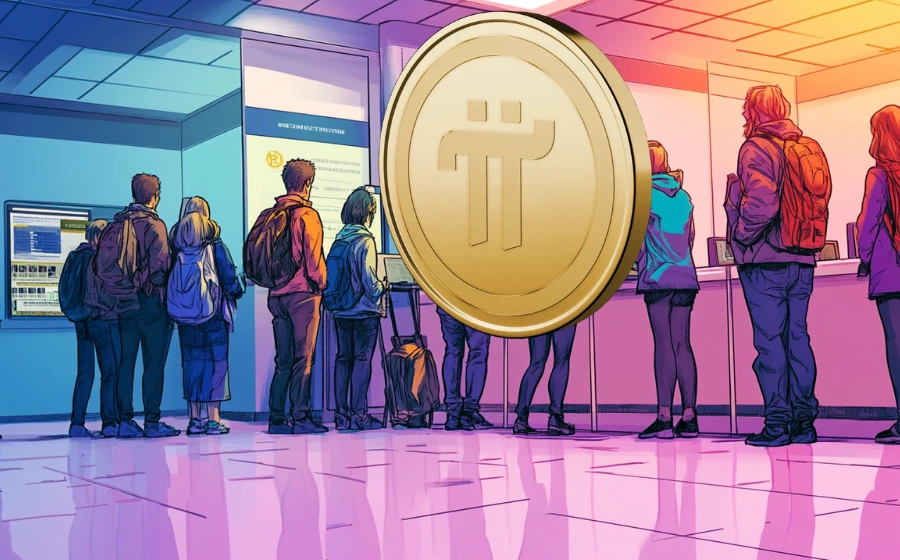
KEYTAKEAWAYS
-
Meteora turned failure into foundation.Rising from the collapse of Mercurial and the FTX fallout, Meteora rebuilt itself into one of Solana’s most critical liquidity engines.
-
DLMM redefined Solana market making.Its “bin-based” structure created near-zero slippage and CEX-level precision, making Meteora the backbone of Jupiter’s routing and Solana’s trading volume.
-
Transparency became both strength and weakness.While Meteora’s open architecture gained trust, private competitor HumidiFi exploited opacity to outpace it, forcing Meteora to evolve without abandoning its principles.

CONTENT

IT ALL STARTED WITH A NAME EVERYONE FORGOT
On Solana, projects rise and vanish faster than most people can track. When the FTX collapse ripped through the ecosystem in late 2022, Mercurial was one of the many names that disappeared overnight. Its treasury was locked on the exchange, its token value evaporated, and what was once a thriving community turned into silence. For most, that was the end of the story.
But a small group refused to walk away. The team that would later create Meteora decided to stay and rebuild from nothing. They knew “fixing” Mercurial wasn’t an option—the only way forward was to start over completely. Their goal wasn’t restoration; it was reinvention. Solana was too fast, too volatile, too unforgiving for anything less than a clean restart.
That’s where Meteora was born. It wasn’t a rebrand. It was a reboot engineered for speed. The team stopped talking about “recovery” and instead asked: what does liquidity look like on a chain that moves faster than anything else in crypto?
Their answer was the Dynamic Liquidity Market Maker, or DLMM. Instead of a smooth curve like traditional AMMs, DLMM breaks liquidity into precise “price bins,” each with its own depth and logic. Trades inside a single bin have zero slippage; prices only move when liquidity in one bin runs out and the next activates. It’s less a pool and more an on-chain engine—built to think in milliseconds, just like Solana itself.
By early 2024, the results were impossible to ignore. Trading volume climbed fast, TVL stabilized, and market makers began migrating from Raydium and Orca. Jupiter, the network’s leading aggregator, started routing massive flows to DLMM because it consistently offered better quotes. By early 2025, Meteora’s monthly trading volume hit $33 billion. The protocol that everyone thought was dead had become Solana’s liquidity backbone.
But Solana rewards speed and punishes hesitation. The faster you rise, the sooner the next storm hits.
GLORY AND PRESSURE IN THE AGE OF ALGORITHMS
DLMM made Meteora a star. It was fast, precise, and reliable. LPs earned more, traders faced less slippage, and Jupiter’s algorithms began to treat DLMM as the default route for Solana trades. For a few months, it felt like the team had cracked the code for decentralized market making.
Then came HumidiFi.
It appeared out of nowhere: no front end, no community, no open LPs—just volume. In weeks, it was competing head-to-head with Meteora on key trading pairs, sometimes even surpassing it. Researchers soon discovered that HumidiFi wasn’t a community protocol at all but a private, proprietary AMM run by a single market-making entity. It was, essentially, a “dark pool on Solana.”
HumidiFi’s spreads were razor-thin—down to five basis points. Jupiter didn’t care who provided liquidity; it only cared who offered the best price. Overnight, a flood of routing traffic shifted toward the black box.
For Meteora, this was more than competition—it was an existential question. Should open liquidity stay open, even when secrecy performs better? DLMM was fully transparent: every bin, every depth, every fee visible on-chain. HumidiFi was the opposite, a closed system thriving in the shadows.
As one Solana developer quipped, “Meteora showed its engine to the world. HumidiFi covered its engine in smoke—and somehow went faster.”
Meteora’s transparency, once its strength, became a tactical weakness. Competitors could study its structure in real time, while HumidiFi revealed nothing. It was a new kind of race, and for the first time since its rebirth, Meteora found itself chasing a moving target.
And just as it was trying to adjust, another challenge hit from a completely different direction.
THE TGE THAT TESTED EVERYTHING
On October 23, 2025, Meteora held its long-awaited token launch. They called it a “Liquid Launch”—no lockups, no VC allocations, no controlled vesting. Forty-eight percent of the supply hit the market on day one. The idea was bold: let pure market dynamics set the price.
What happened next was chaos.
Solana’s lightning-fast execution meant the entire float was absorbed almost instantly. Sell pressure surged before buy orders could stabilize the book. Within days, $MET had dropped more than 70% from its peak. Community sentiment split in two. Supporters praised the team’s honesty and commitment to decentralization. Critics called it reckless and naive, a textbook example of what happens when ideals meet liquidity.
Then, just as the market began to catch its breath, headlines turned ugly. Cofounder Ben Chow was named in a class-action lawsuit linked to M3M3 and several controversial memecoin launches. The case wasn’t directly connected to Meteora, but timing is everything in crypto. Confidence wavered, sentiment dipped further, and the same transparency that once earned respect now exposed every crack.
Still, the engine kept running. DLMM performed flawlessly, routing billions in daily volume. LP yields held steady. Jupiter continued to list Meteora as a top route. But beneath the data, the question lingered: could a protocol that lived by radical transparency survive a market that rewarded secrecy and speed?
WHAT COMES NEXT
By early 2026, Meteora had made its move. Instead of retreating, the team doubled down. They announced Launch Suite 2.0, a rebuilt version of M3M3 designed to make token launches safer, more transparent, and free from controversy. They also introduced new anti-bot infrastructure and DLMM upgrades to make bin adjustments faster and fairer.
HumidiFi remained an ever-present rival, but Meteora didn’t aim to mimic it. Instead, it leaned deeper into its strengths: openness, design precision, and adaptability. The philosophy was clear—beat the dark pools by out-engineering them.
Solana’s markets haven’t slowed down, and neither has Meteora. It continues to anchor the network’s trading volume, even as competitors rise and fall around it. Its story mirrors Solana’s own rhythm—brutal, relentless, but always moving forward.
Born in collapse, rebuilt through innovation, and tempered by chaos, Meteora has become more than a protocol. It’s a reminder of what still drives the Solana ecosystem: speed, risk, and the stubborn belief that a better system can always be built.















